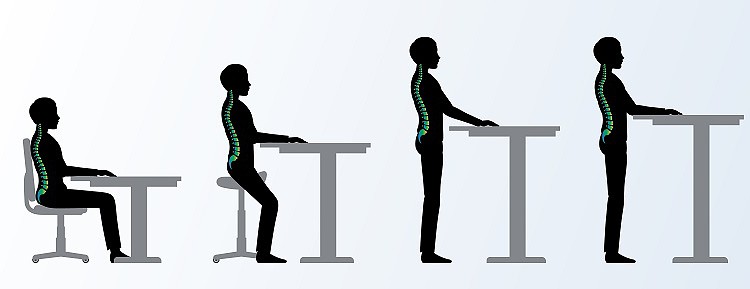The ergonomically correct height of a desk varies depending on the height of the person using the desk, the equipment the person needs to use, and the position of the user while working—standing or sitting. As these factors vary from one person to another, a desk with an adjustable height may be ideal.
You can determine if your desk is at the correct height by observing if your shoulders are relaxed, your elbows, knees, and wrists are aligned properly, and your feet rest on the floor.
As important as it is to have the right posture when you are sitting, the height of your desk matters too. In fact, poor desk ergonomics, improper desk height, and poor sitting posture have many negative health implications.
Incorrect desk height is the leading cause of discomfort among office workers and causes eye strain, back pain, neck and shoulder strain, and so on.
When our elbows, hands, and legs remain in an incorrect position for long hours due to improper desk height, it certainly creates discomfort and irritability at work. Therefore, it is important to identify what the ergonomically correct height for a desk is.
A desk with the right height not only improves your mental and physical health, but it also contributes to a better and more productive day at the office.
We’re here to help you with great tips and techniques to ensure you solve this problem easily and alleviate any related health worries.
In this article, you’ll find facts concerning the ergonomics of an office desk. We’ll tell you how the right desk height affects your posture and health, what is the correct height for a desk, how to know if your desk is not at the right height, and how to calculate the desk’s height yourself.
Keep reading to find out more.
Table of Contents
Why Does The Desk Height Matter For Your Posture?
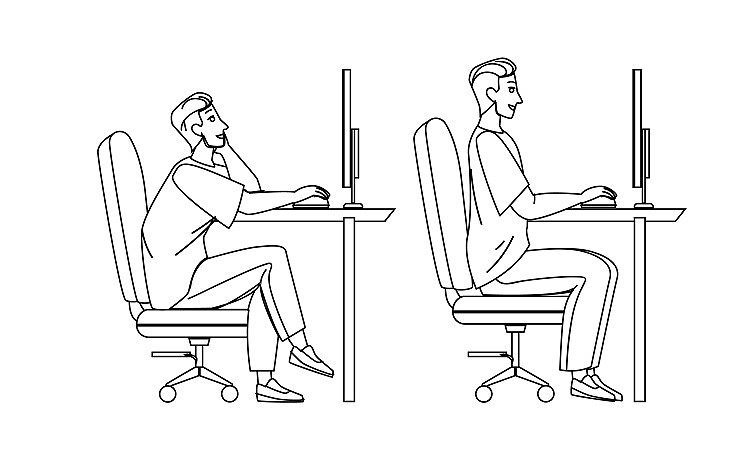
The desk height matters, as your posture tends to compensate for a suboptimal desk height, affecting the natural curvature of your spine.
With up to 84% of people suffering from acute lower back pain, it comes as no surprise that poor posture has several ill effects. Apart from body aches, it can permanently reshape your bones and tendons, cause muscle fatigue, breathing difficulties, arthritic joints, digestive issues, and mood disturbances.
One of the biggest contributors to poor posture and its health consequences is incorrect desk height.
The way your desk is positioned—including its height and its distance from your eyes—directly influences how you feel. It can also affect your body negatively.
Lower back pain, headaches, joint pain, and poor eyesight are only a few health implications resulting from a poorly arranged desk.
Now, how exactly does it happen, and why does the desk height significantly affect our posture?
When we spend hours at an improperly positioned desk, we adjust our posture accordingly.
We tend to lean forward if the desk is too low or slouch if the monitor is not at the right eye level. Our heads are positioned forward and down if the desk height is too low.
If a desk is too high and the chair is too, our legs may dangle well above the ground.
We may extend our arms forward to use the keyboard and mouse and overwork our shoulder and arm muscles. We may also rest our arms at the edge of the desk, restricting blood flow to the wrist muscles.
If your desk is too high or too low, you are likely to maintain these awkward upper limb postures for long periods. Instead, when your desk is at the ergonomically correct height, you will work with neutral back and upper limb postures.
This will not only improve your performance but also make a difference to your overall health.
What Is The Ergonomically Correct Height For A Desk?
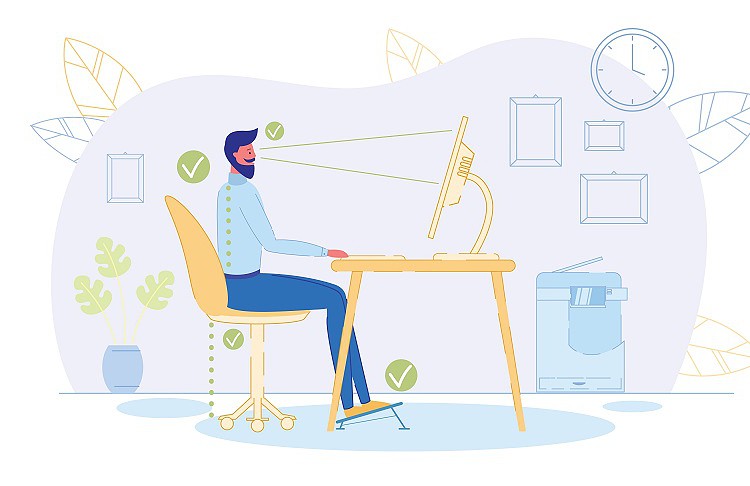
The ergonomically correct height for a desk varies from one individual to the next. Here’s how to ascertain if the height of the desk is correct.
- Your elbows are at a 90-degree angle.
- Your keyboard, mouse, and other accessories placed on the surface of the desk are easily accessible without strain.
- Your arms sit comfortably at a right angle to your sides.
- Your back is duly straight, your shoulders relaxed, and your feet are placed flat on the ground.
The position of your desk has to be comfortable and ergonomic so that you do not have to compromise on your posture. You should not have to mold your back in accordance with the desk’s height.
Different people have different builds. This has to be taken into consideration while picking the height of the desk for optimal comfort.
How To Check If Your Desk Is Too High?

Take a look at your elbow position, your back position, and your feet placement to check if your desk is too high.
Most desks are pre-fixed, while some allow you to adjust them according to your height. The adjustability factor is crucial so that you do not end up damaging your back in the long run.
Look out for the following signs to confirm if your desk is too high for you.
1. The elbow is usually bent beyond a 90 to 100-degree angle.
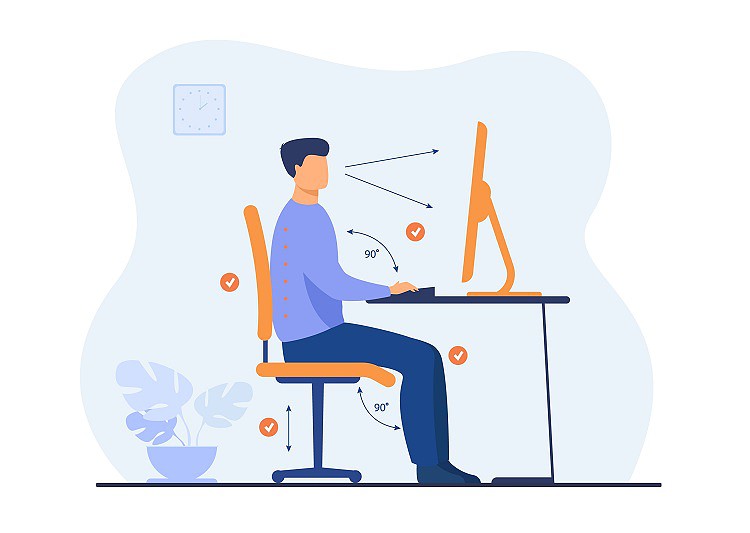
When the elbow is pulled, bent, or lifted at an inappropriate angle, you are at the risk of injuring your elbow and causing cubital tunnel syndrome.
Your desk must be at a certain height so that you are able to place your elbows comfortably on the surface of the desk.
2. Your back posture is slouched and droopy.
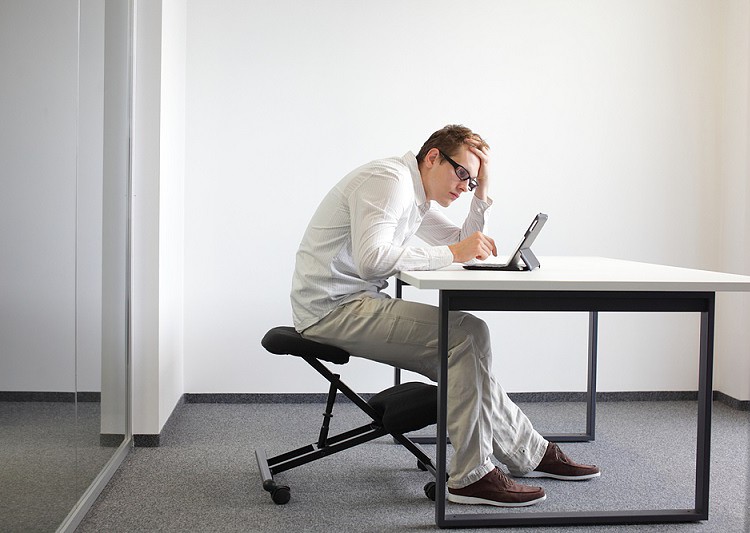
A poorly aligned desk height coupled with a low-quality chair that does not come with ample support and headrest is the recipe for a slouched and droopy posture.
A poor posture can further result in a potbelly, acute case of back pain, disrupted sleep cycles, and lack of confidence.
3. Your feet do not lie flat on the floor.
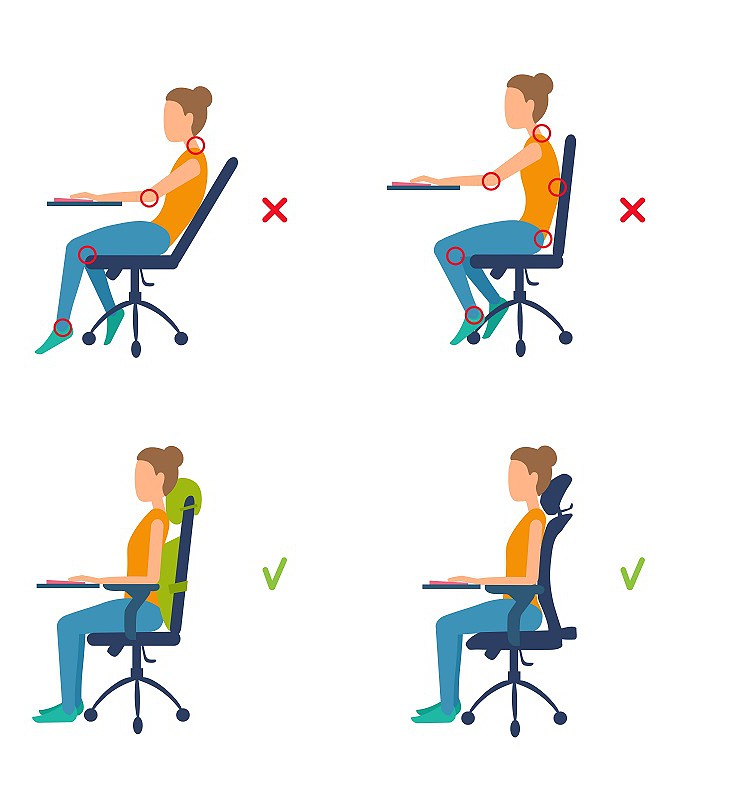
Sitting with your feet not touching the floor is a bad habit that affects your body in the long run.
When your feet do not touch the ground, it results in dangling of the legs.
The pelvis muscles tilt backward, and your muscles get exhausted in this situation.
Work your desk height and chair height so that your feet lay flat on the floor’s surface, and you do not end up putting too much pressure on your legs.
What Is The Average Desk Height?

The standard height of desks found across offices and households is anywhere from 28 inches to 30 inches.
This desk height is appropriate for people who are slightly above 5’10”.
People who are shorter can work with desk heights as low as 22 inches, whereas slightly taller people can go for desk heights that are around 33 inches.
The space under your desk should be neat and clutter free so your knees have enough space and your feet can be placed flat on the ground.
If there is no way to adjust the height of your desk, try the following:
- If the desk is low, and there is no way to raise its level to make it work-friendly, place sturdy blocks beneath the desk’s legs to elevate its height.
- Most desks are tall and do not allow users the provision of lowering them. In such cases, use an ergonomic office chair that you can raise comfortably to suit the height of the desk.
Ensure that the monitor is at an arm’s length from you, and the top of the screen, a little below your eye level.
Desk Height Calculator
Various online calculating tools help you determine the correct desk height according to your height. You’ll not only be able to identify the correct desk height but also estimate the ideal distance between you and the desk while you are seated.
Here’s how to use a desk height calculator:
- Input your height (inclusive of your heel or shoe height).
- Choose your working position—whether you work seated or standing.
You’re done. The calculator will give you tips on how to adjust your workstation.
The calculators work well for both sitting desks and standing desks. A drawback with standing desks is that they are usually only suitable for tall people—someone who is around 6 feet in height.
People who are shorter need to work out tricks and alternatives through footrests and chairs to accustom themselves to the desk’s height.
Conclusion
Who would have thought that besides a poor diet and lack of exercise, an improperly laid workstation could be the reason for your deteriorating health?
Of all the different components that make up your workstation, a desk is one of the most important ones.
You are reliant on a desk for most of your day, be it for work or having your meals. Hence, proper alignment of your desk is essential to ensure a constructive working day.
Remember to invest in a premium-quality desk that offers plenty of features to adapt to your body’s posture and allows you to sit comfortably. A good, ergonomic office chair with adjustable arms, lumbar support, and seat depth would be the best combination to go with your desk.

My name is Vance, and I am the owner of To Ergonomics. Our mission is to improve your workflow by helping you create a supportive and welcoming environment. We hope that you’ll find what you’re looking for while you’re here.

